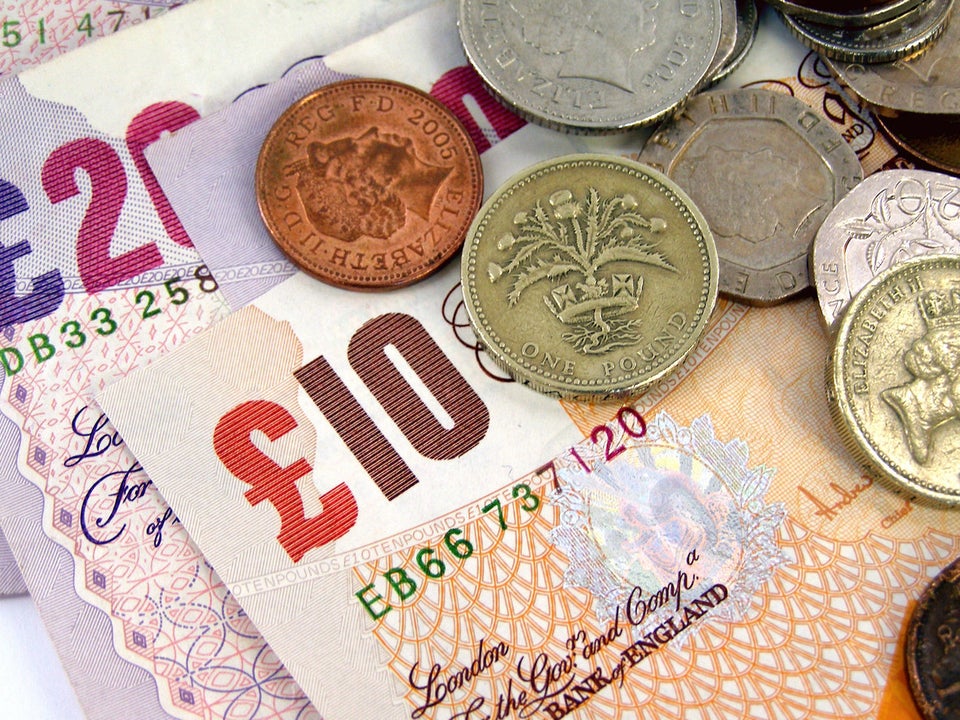Along with everything else you have to learn as a new parent, knowing how much your child should be eating at different ages is another to add to the list.
We spoke to a dietician at the Infant and Toddler Forum (ITF), an organisation made up of experts from paediatrics, dietetics, child psychology and specialising in early years nutrition and development, to get their advice.
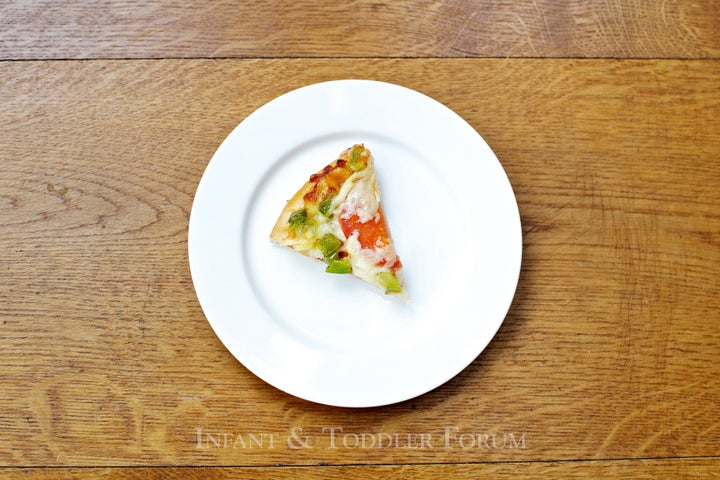
In a small-scale study of 1,000 parents, the ITF found earlier in 2016 that one in 10 parents are giving their children adult-size portions before they starts school.
“Parents are feeding their toddlers too much food,” Judy More, paediatric dietitian and member of the ITF, told HuffPost UK.
“Parents routinely offer portions bigger than the recommended size range for pre-schoolers when serving popular meals [such as spaghetti bolognese and chicken nuggets with chips], drinks and treats.”
More said the reason for this is because parents lack confidence in how much food they should be giving their children. She said parents are often more concerned that their child is eating “too little” rather than too much food.
Advising parents, More continued: “Parents simply need to be more aware of how much food they put on their toddlers’ plates.
“Some children are good at regulating their food intake to provide enough calories for their energy needs and for normal growth.
“However, we do know that one predictor of how much some young children eat is how much is put on their plates. Larger portions form acceptance about what is an appropriate amount to eat and this then becomes the ‘norm’.
“In other words, how much you offer can affect how much your child will eat.”
Gillian Farren, a dietitian and British Dietetic Association (BDA) spokesperson told HuffPost UK: “The main problem is that parents often try to progress children too quickly.
“There is often a rush to get a big enough portion size and they’re anxious to move their child on and fill up on food groups.”
Farren advised parents to give children a small portion at first and make sure seconds are available.
“Make sure there is enough according to the portion size guide, serve a small amount to everybody and encourage the child to have seconds if they feel the need,” she said.
“It will give children confidence eating that and then allow them to recognise their own appetite.”
Farren advised parents look at First Steps Nutritions ‘Family Cookbook’ that includes photographs for each recipe, showing what size portion to offer to a seven to 12-month-old, a one- to four-year-old, a five to 11-year-old, and a 12+ year old.
The ITF developed the portion sizes guide with medical experts in early years nutrition and development. These portion sizes were developed by comparing them with reported average amounts eaten by healthy young children. The sizes have been published by the British Dietetic Association Ltd in an evidence-backed research paper.
We’ve shared some popular food items and the recommended portion sizes below. View the full portion size guide here.
1. Bread and starchy foods
A serving of these could be offered at each meal.

2. Fruit and vegetables
Servings can be offered as snacks, or 1-2 servings per meal.
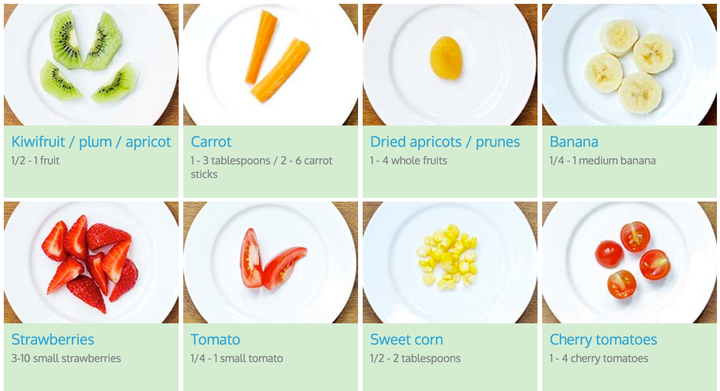
3. Milk, cheese and yoghurt
One serving should be given around three times per day.
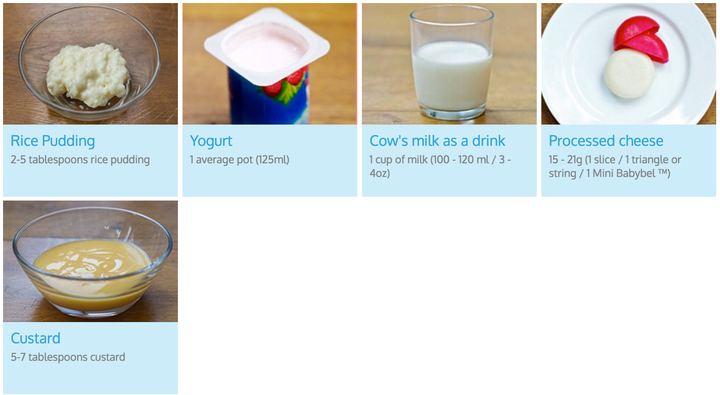
4. Meat, fish and eggs
One serving, two to three times per day.

5. Foods high in fat and sugar
Biscuits and cakes no more than once a day, sweets and confectionery should be once a week.
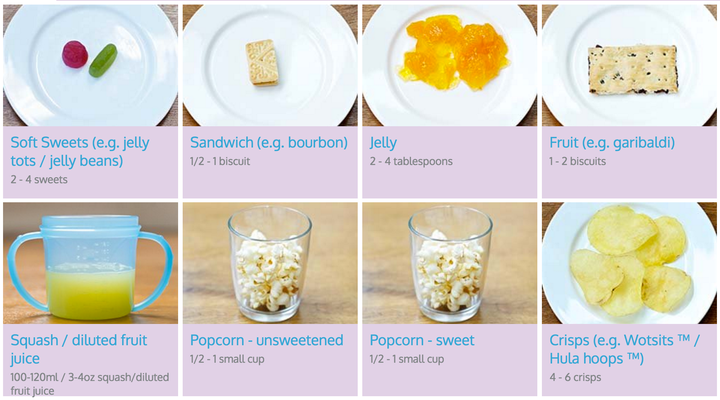
6. Foods from multiple food groups
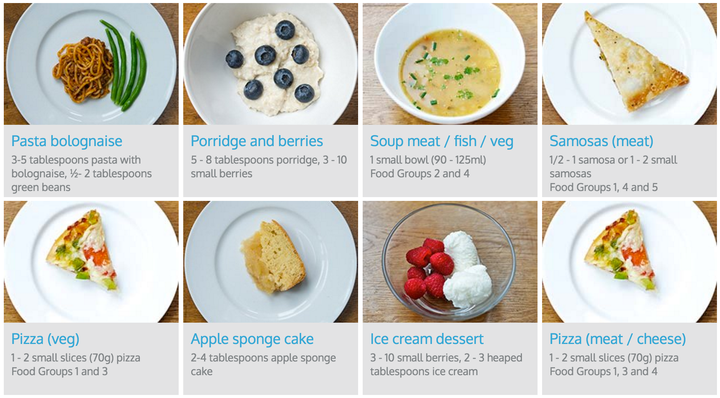
Top tips for parents on portion sizes from Judy More:
1. Keep to planned snacks rather than allowing grazing and offer nutritious food such as oatcakes, fruit or breadsticks.
2. Hug or distract your child when they are upset rather than giving food or sweet drinks.
3. Distract your child with an alternative activity if they ask for food between their meals and planned snacks
4. If given, limit sweets and crisps to one item once a week and decant a small amount into a little pot rather than giving your child the whole packet.
5. Water is the best choice for drinks. If you offer fruit juice or squash dilute them about 1 in 10 with water.
6. Limit milk drinks to 3-4oz (100-120mls) per day - toddlers need much less milk than babies.
